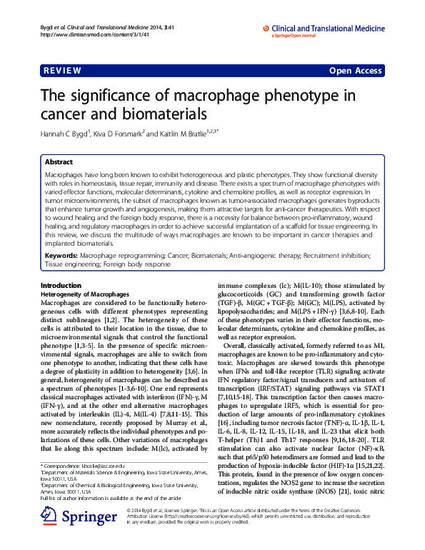
Macrophages have long been known to exhibit heterogeneous and plastic phenotypes. They show functional diversity with roles in homeostasis, tissue repair, immunity and disease. There exists a spectrum of macrophage phenotypes with varied effector functions, molecular determinants, cytokine and chemokine profiles, as well as receptor expression. In tumor microenvironments, the subset of macrophages known as tumor-associated macrophages generates byproducts that enhance tumor growth and angiogenesis, making them attractive targets for anti-cancer therapeutics. With respect to wound healing and the foreign body response, there is a necessity for balance between pro-inflammatory, wound healing, and regulatory macrophages in order to achieve successful implantation of a scaffold for tissue engineering. In this review, we discuss the multitude of ways macrophages are known to be important in cancer therapies and implanted biomaterials.
Available at: http://works.bepress.com/kaitlin_bratlie/22/

This article is published as Bygd, Hannah C., Kiva D. Forsmark, and Kaitlin M. Bratlie. "The significance of macrophage phenotype in cancer and biomaterials." Clinical and translational medicine 3, no. 1 (2014): 62, doi:10.1186/s40169-014-0041-2. Posted with permission.